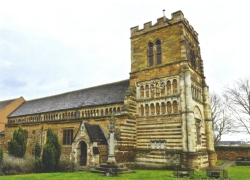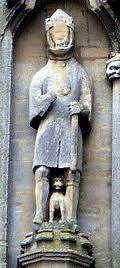Northampton and the site of the Castle have had a long period of activity. A few Roman pieces were found on the site probably as the road from the Roman site at Duston may have crossed the river Nene at this point. The area around St. Peter’s church had been occupied and defensible since at least soon after the Romans left in 410. Northampton Castle falls within the parish of St Peter’s.
Significant pieces of Saxon (Danish) material have been found locally. Indeed King Cnut who ruled Norway and Denmark, and England between 1016-35, married a Northampton lady named Aelfgifu, who ruled half of his kingdom for some years, and survived him.
Northampton Museum holds many Saxon objects including coins from circa 900 A.D. onwards, as well as some information about the Castle and early history of Northampton, or Hamtun as it was once known. By the 10th century, Hamtun was already the County town, and held the balance of power amongst the other Saxon kingdoms. In this way, it was during the Saxon period that Northampton became an important regional centre.
One extremely powerful figure was Waltheof, Earl of Northampton under Edward the Confessor (1042-66). Waltheof’s daughter Matilda was great niece to William the Conqueror and married Simon de St. Liz I.



